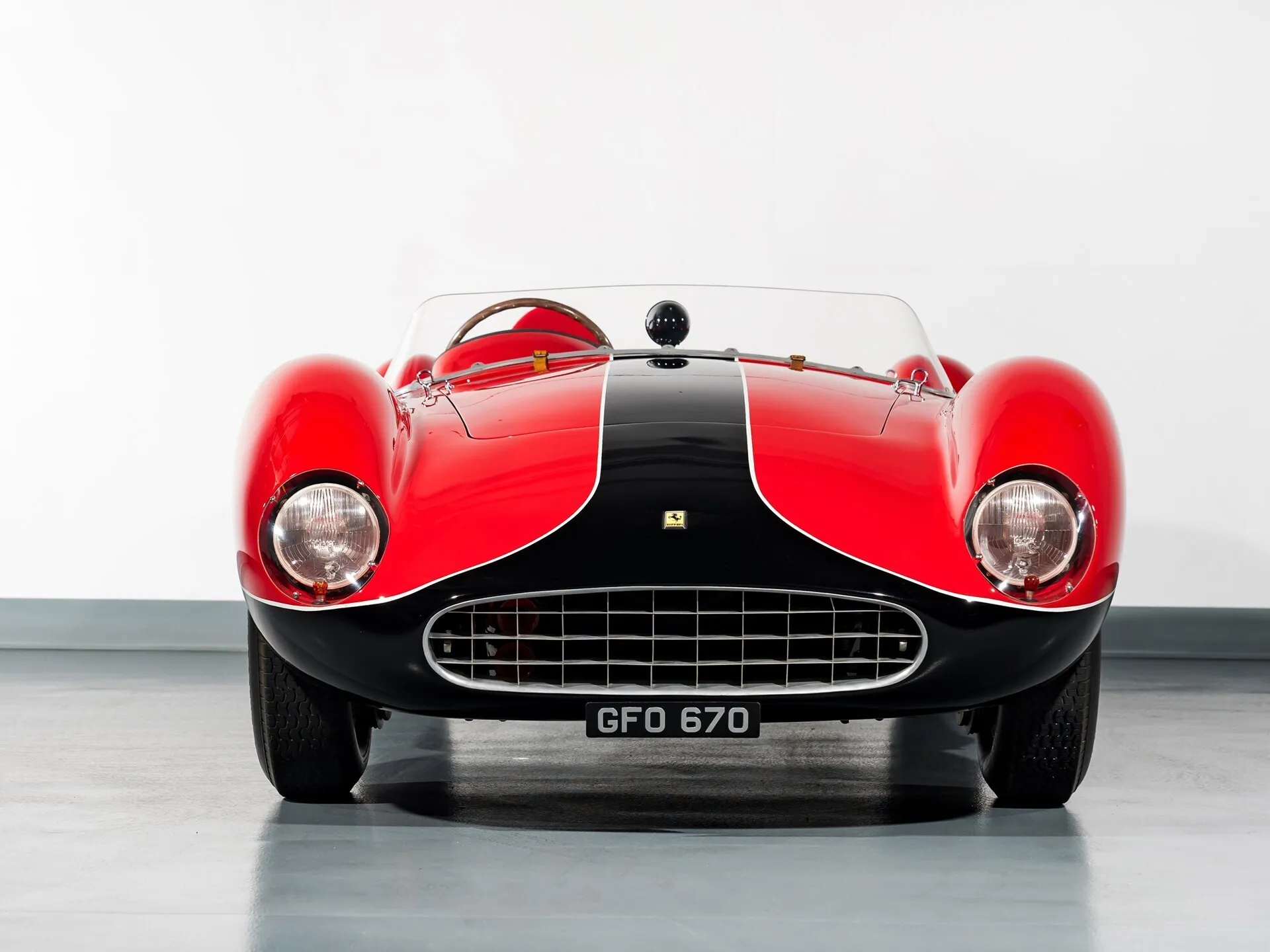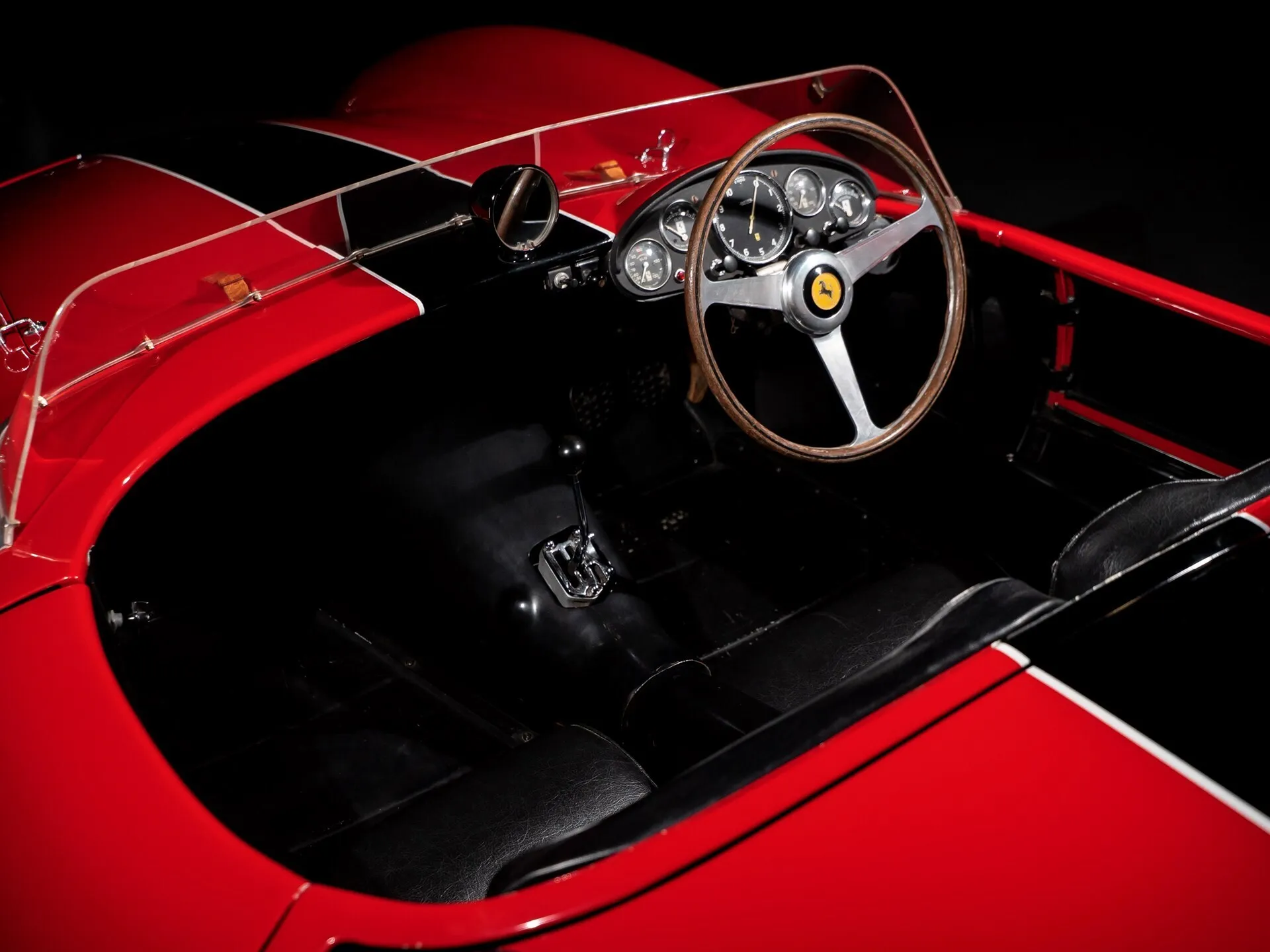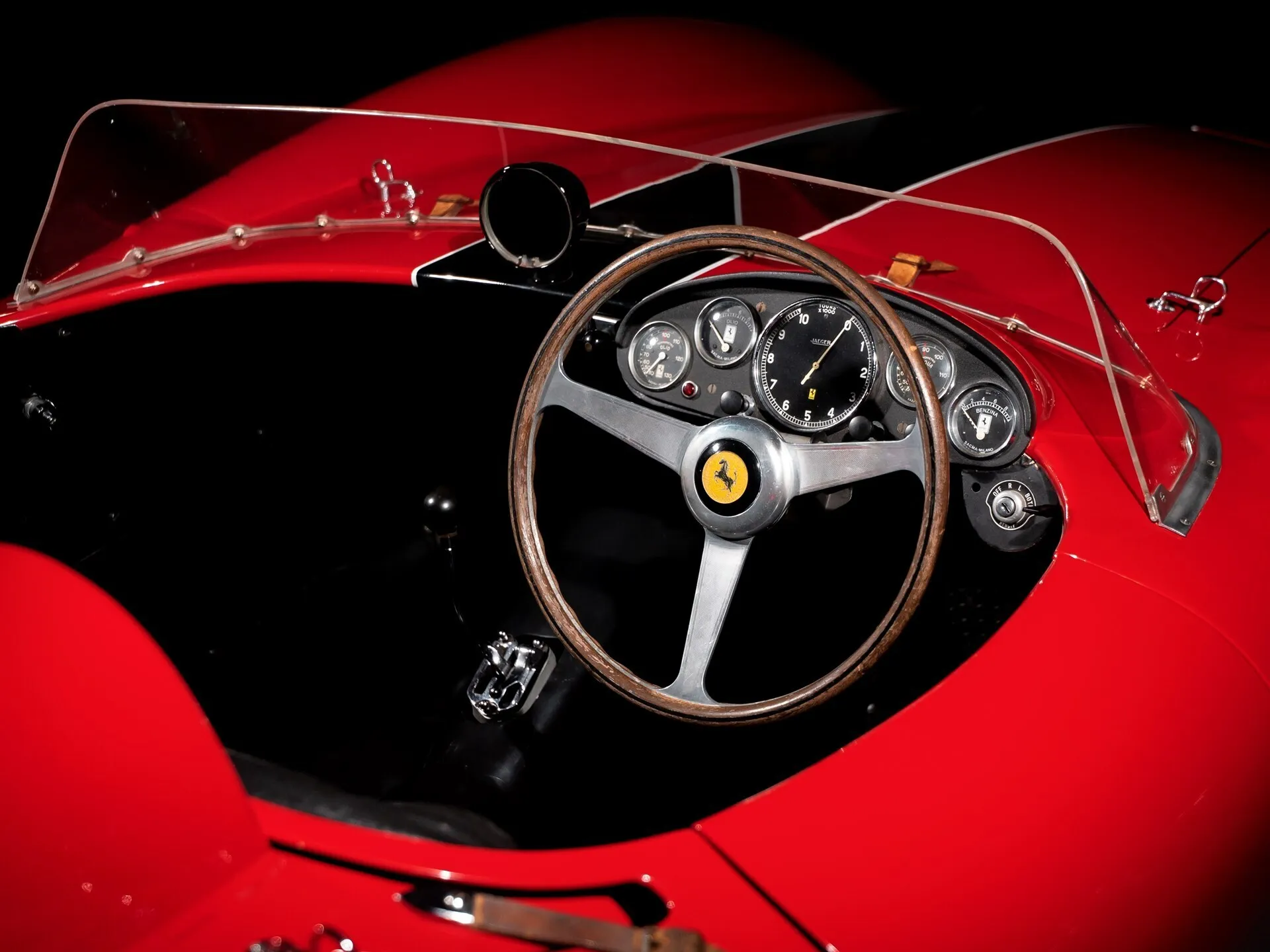Porsche es la marca de lujo más valiosa según Brand Finance
- Porsche sigue siendo la marca de lujo más valiosa del mundo, valorada en 33.700 millones de dólares, seguida por Louis Vuitton (23.400 millones de dólares).
- Ferrari es la marca de lujo más fuerte del mundo con una calificación AAA+, mientras que Lamborghini y Aston Martin aceleran la fortaleza de su marca.
- The Ritz-Carlton duplica su valor y se convierte en la marca de lujo de más rápido crecimiento en valor de marca.
- Estée Lauder entra en el top ten de los más valiosos y Dior y Dolce & Gabbana muestran un valor de marca impresionante.
Access the full Brand Finance Luxury & Premium 50 2022 report here
Madrid, 5 de octubre de 2022.- Porsche sigue siendo la marca de lujo y premium más valiosa del mundo, valorada en 33.700 millones de dólares según el último informe Luxury & Premium 50 2022 de Brand Finance, la consultora independiente líder en valoración de marcas que cumplen con ISO 10668 e ISO 20671 sobre el tema, que analiza las 50 marcas de lujo y premium más valiosas del mundo.
Porsche (cuyo valor de marca ha caído un 2% a 33.700 millones de dólares) se ha mantenido en el primer lugar un año más como la marca de lujo y premium más valiosa del mundo. El liderazgo de Porsche en el segmento de lujo y premium es una buena noticia para la marca, que acaba de ser escindida por su propietario, el Grupo Volkswagen, en una oferta pública inicial en la Bolsa de Valores de Frankfurt.
Cada año, la consultora líder en valoración de marcas, Brand Finance, valora 5000 de las marcas más importantes del mundo y publica más de 100 informes que clasifican las marcas en todas las industrias y países. Las 50 marcas de lujo y premium más valiosas y sólidas se incluyen en el ranking anual Brand Finance Luxury & Premium 50 2022.
Alex Haigh, director de Brand Finance, dijo: “La nueva oferta pública inicial de Porsche muestra el valor de una marca de una manera muy visceral, muy similar a la escisión de Ferrari liderada por Sergio Marchionne hace años. Tenía mucho sentido extraer valor. escondido dentro del grupo Volkswagen, especialmente cuando se trata de una marca de lujo icónica como Porsche, que puede generar tales retornos en comparación con otras marcas en la cartera”.
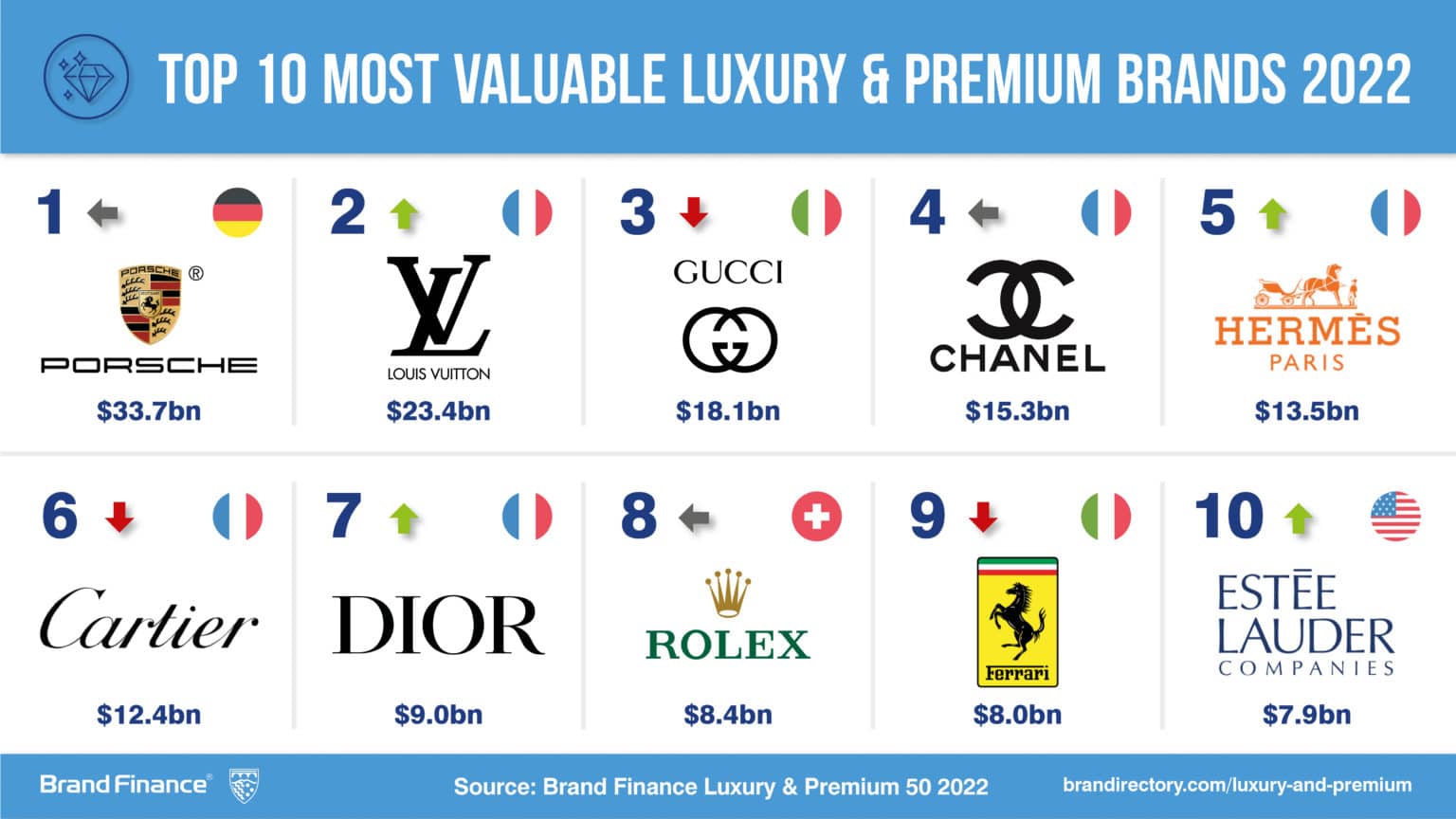
Louis Vuitton es la segunda marca de lujo y premium más valiosa, valorada en 23.400 millones de dólares.
Louis Vuitton (el valor de la marca aumentó un 58 % hasta los 23 400 millones de dólares) se benefició del aumento del gasto en artículos de lujo durante el período de la pandemia, especialmente en China. Las restricciones relacionadas con el covid-19 beneficiaron a Louis Vuitton, ya que los consumidores redirigieron sus gastos de viajes, hospitalidad y servicios hacia productos de lujo de alta gama.
Louis Vuitton ahora está tratando de administrar su marca a través de sólidas campañas de marketing digital enfocadas en atraer nuevas bases de clientes, mientras mantiene una herencia de marca impregnada de una rica historia. Por otro lado, el minorista de lujo español Loewe, cuyo valor de marca ha aumentado un 7%, se enfrenta a retos similares, ya que ha establecido múltiples canales de comunicación con sus clientes, online y presencial.
Pilar Alonso Ulloa, Directora General Iberia (España, Portugal) y Sudamérica comentó: “LOEWE representa a España en este ranking desde 2018. El valor de la marca ha ido creciendo año tras año, sin embargo, su fuerza se ha visto mermada en los últimos dos años. . Es una de las 10 marcas más valoradas por los consumidores en España que destacan la familiaridad de la marca frente a otras del sector”.
Ferrari es la marca de lujo y premium más fuerte del mundo con una calificación AAA+
Además de calcular el valor de la marca, Brand Finance también determina la fuerza relativa de las marcas a través de un cuadro de mando integral de métricas que evalúan el gasto en marketing, el valor de la marca y el rendimiento comercial (resultados comerciales). Con la certificación ISO 20671, la Evaluación del valor de las partes interesadas de Brand Finance incorpora datos originales de investigación de mercado de más de 100 000 encuestados en más de 35 países y en casi 30 industrias.
Ferrari (cuyo valor de marca ha caído un 13 % hasta los 8000 millones de dólares estadounidenses) es una de las marcas más reconocidas del mundo y es la marca de lujo más fuerte del mundo, con una puntuación en el Brand Strength Index (BSI) de 90,9 sobre 100 y una élite Calificación AAA+.
Un atributo importante de la marca Ferrari son sus icónicos motores de combustión interna. Por lo tanto, la próxima migración a los vehículos eléctricos representa tanto un desafío como una oportunidad para la marca, que tiene como objetivo fabricar su primer vehículo totalmente eléctrico para 2025 y espera que los vehículos eléctricos representen el 40% de su oferta de productos para 2030.
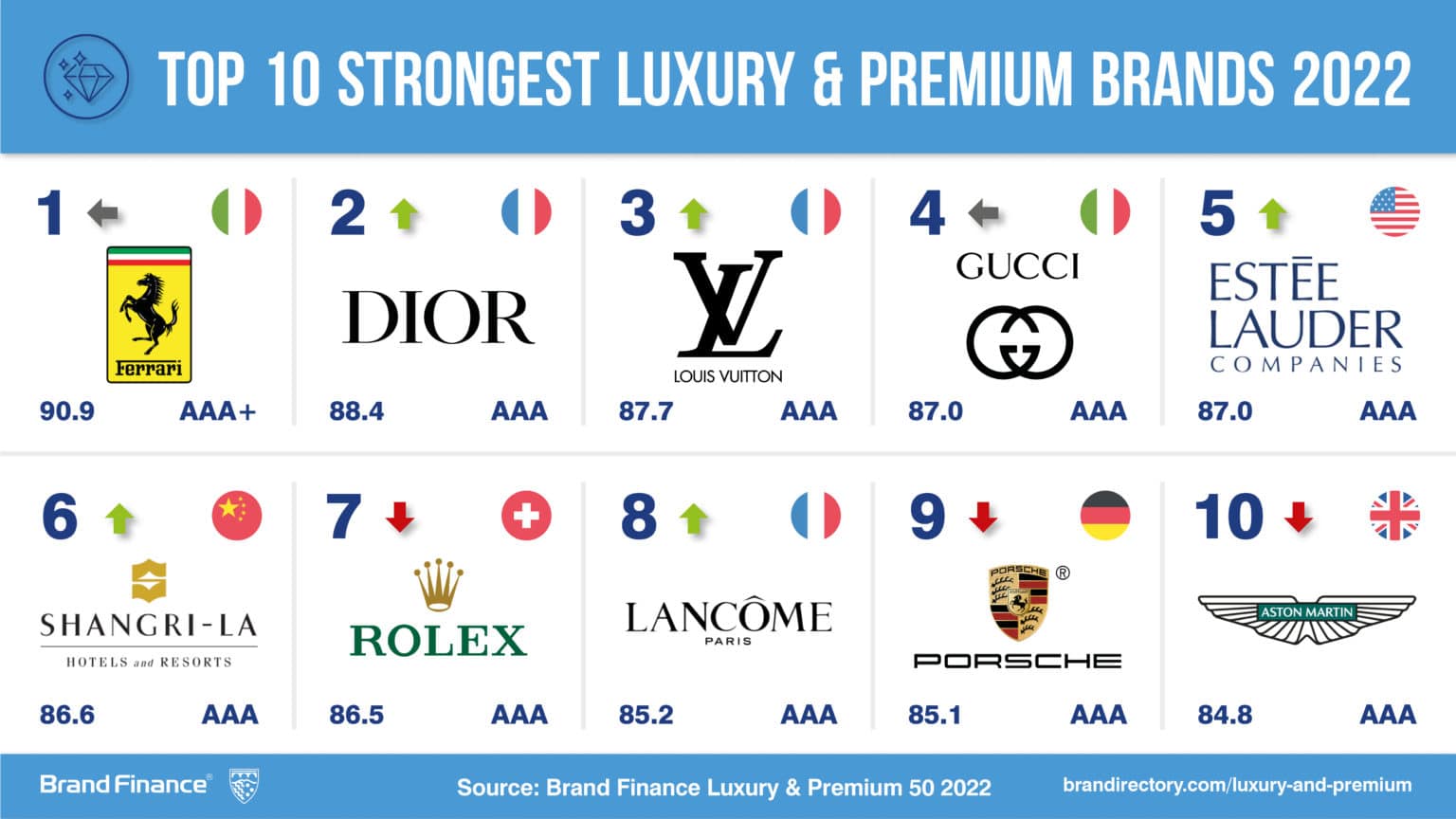
Louis Vuitton es la segunda marca de lujo y premium más valiosa, valorada en 23.400 millones de dólares.
Louis Vuitton (el valor de la marca aumentó un 58 % hasta los 23 400 millones de dólares) se benefició del aumento del gasto en artículos de lujo durante el período de la pandemia, especialmente en China. Las restricciones relacionadas con el covid-19 beneficiaron a Louis Vuitton, ya que los consumidores redirigieron sus gastos de viajes, hospitalidad y servicios hacia productos de lujo de alta gama.
Louis Vuitton ahora está tratando de administrar su marca a través de sólidas campañas de marketing digital enfocadas en atraer nuevas bases de clientes, mientras mantiene una herencia de marca impregnada de una rica historia. Por otro lado, el minorista de lujo español Loewe, cuyo valor de marca ha aumentado un 7%, se enfrenta a retos similares, ya que ha establecido múltiples canales de comunicación con sus clientes, online y presencial.
Pilar Alonso Ulloa, Directora General Iberia (España, Portugal) y Sudamérica comentó: “LOEWE representa a España en este ranking desde 2018. El valor de la marca ha ido creciendo año tras año, sin embargo, su fuerza se ha visto mermada en los últimos dos años. . Es una de las 10 marcas más valoradas por los consumidores en España que destacan la familiaridad de la marca frente a otras del sector”.
Ferrari es la marca de lujo y premium más fuerte del mundo con una calificación AAA+
Además de calcular el valor de la marca, Brand Finance también determina la fuerza relativa de las marcas a través de un cuadro de mando integral de métricas que evalúan el gasto en marketing, el valor de la marca y el rendimiento comercial (resultados comerciales). Con la certificación ISO 20671, la Evaluación del valor de las partes interesadas de Brand Finance incorpora datos originales de investigación de mercado de más de 100 000 encuestados en más de 35 países y en casi 30 industrias.
Ferrari (cuyo valor de marca ha caído un 13 % hasta los 8000 millones de dólares estadounidenses) es una de las marcas más reconocidas del mundo y es la marca de lujo más fuerte del mundo, con una puntuación en el Brand Strength Index (BSI) de 90,9 sobre 100 y una élite Calificación AAA+.
Un atributo importante de la marca Ferrari son sus icónicos motores de combustión interna. Por lo tanto, la próxima migración a los vehículos eléctricos representa tanto un desafío como una oportunidad para la marca, que tiene como objetivo fabricar su primer vehículo totalmente eléctrico para 2025 y espera que los vehículos eléctricos representen el 40% de su oferta de productos para 2030.
Access the full Brand Finance Luxury & Premium 50 2022 report here
Cada año, Brand Finance pone a prueba a 5000 de las marcas más importantes, evalúa su fortaleza y cuantifica su valor, y publica casi 100 informes, clasificando marcas en todas las industrias y países. Las 50 marcas más valiosas del sector lujo y premium se incluyen en el ranking BBrand Finance Luxury & Premium 50 2022 ranking..
La clasificación completa, explicaciones adicionales, gráficos e infografías, más información sobre la metodología, así como definiciones de términos clave están disponibles en el Brand Finance Luxury & Premium 50 2022 report.
El valor de la marca se entiende como el beneficio económico neto que el propietario de una marca lograría al otorgar la licencia de la marca en el mercado abierto. La fortaleza de la marca es la efectividad del desempeño de una marca en medidas intangibles en relación con sus competidores. Vea a continuación una explicación completa de nuestra metodología.






